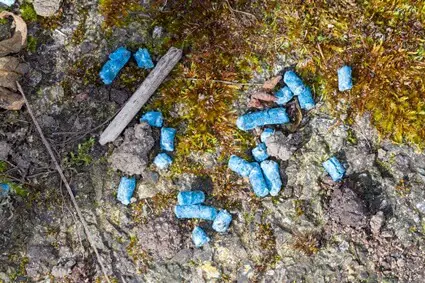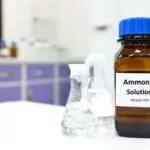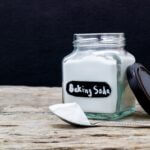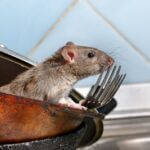As the main ingredients are methiocarb and metaldehyde, slug pellets are lethal to mammals like rats. When ingested, they damage the organs, nervous system, and brain.
Unsurprisingly, many people use slug pellets to kill rodents.
If a rat eats a slug pellet, metaldehyde can cause dehydration, paralysis, nervous system failure, and brain damage. Methiocarb can also cause severe respiratory distress.
If a rat eats a contaminated slug, dead or alive, it’ll die within 2-3 days.
Rats are attracted to slug pellets, which also appeal to household pets such as cats and dogs. Poisoned rats may be eaten by pets, leading to secondary poisoning.
Are Slug Pellets Poisonous To Rats?
Slug pellets are poisonous to rats due to metaldehyde, one of the active slug-killing ingredients. Even in small amounts, it causes neurological damage.
Also, rats may get secondary poisoning. They’re not picky about their foods, so a slug or snail can make a tasty meal. If slug pellets have contaminated the slug or snail, the poison will get into the rat’s system. Secondary poisoning from the metaldehyde will lead to death.
Most commonly, rats eat the slug pellets out of curiosity or hunger. Rodents may chew through the plastic bag containing the pellets and feast on them. They may also ingest the ones scattered around your yard. The poisoning will affect the rat faster, especially if the rat eats several.
Rats can develop poison shyness, but they rarely avoid slug pellets. The poison targets the nervous system, so rats won’t find any connection between illness and ingesting the food.
Why Do Slug Pellets Kill Rats?
Slug pellets are small, cylinder-shaped, and contain chemicals that poison snails and slugs. Although targeted at slugs, the same deadly effects apply to rats.
Usually, pellets are scattered around growing plants to protect them from damage by pests. Slug pellets are made from methiocarb or metaldehyde, which are toxic to slugs and rats.
Metaldehyde
Does metaldehyde in slug pellets kill rats? This poison increases mucus secretion from the slug’s mucus cells, thus resulting in dehydration and death. It’s a contact-based poison, meaning that slugs need only touch the pellets to experience its deadly effects.
Metaldehyde is toxic to rats, pets, and humans. According to Environmental Science, metaldehyde is an environmental pollutant. Despite the risks, using metaldehyde in pest control is still common.
About 283 mg of metaldehyde per kilogram body weight is the lethal dose for rats. According to Toxicology, smaller doses administered over a long period lead to many damaging effects.
The tested rats experienced:
- Transverse lesions of the spinal cord.
- Paralysis.
- Swollen livers and eventual liver failure.
- Dehydration.
- Reproductive difficulties.
The tested rats produced deformed offspring, if they gave birth at all. Worse still, the harmful effects occurred for three generations in those who survived.
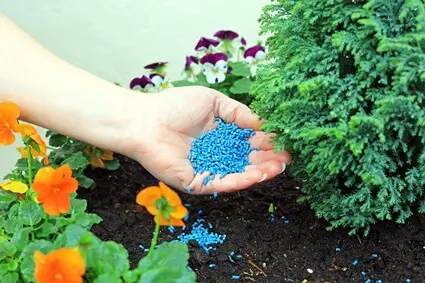
Methiocarb
Although banned in many countries, methiocarb was commonly used in slug pellets in the 1990s.
It’s no longer a preferred pest control solution due to its toxic effects on humans. Also, it can affect pets and other beneficial wildlife. However, older packages of slug pellets may still contain this ingredient.
It can lead to respiratory failure, nervous system damage, and eventual death in rats. However, this takes a long time to affect rats, for several days and in large doses.
For this reason, it’s primarily the metaldehyde that does the damage.
How Long Does It Take For A Rat To Die From Slug Pellets?
It can take 2 -3 days for a rat to die after consuming slug pellets second-hand.
If the rat eats the pellets directly, this will happen much faster. After all, rats will usually continue to feed on foods they find appealing, so they’ll continue to eat until they succumb to the poison.
Do Slug Pellets Attract Rats?
Slug pellets are likely to attract rats who are curious about new food. Most people must implement measures to prevent rats, mice, and squirrels from chewing through their bags of slug pellets.
Most commercial slug pellets are made from a base of protein-rich material designed to attract slugs and snails. As a byproduct, the pellets lure in rats. Rats are omnivorous and not picky about what they eat, so they can easily be tricked into eating slug pellets.
Unfortunately, slug pellets can attract household pets. If you own a dog, cat, or bird, they may fall victim to eating the pellets that you scatter to kill off rats.
According to Environmental Science: Water Research & Technology, metaldehyde is the second most common reason for lethal poisoning in dogs.
The symptoms of metaldehyde poisoning include:
- Vomiting.
- Drooling.
- Muscle tremors.
- Seizures.
- Hyperthermia.
Even 1 gram of metaldehyde is enough to kill a dog. So, it may be wise to avoid slug pellets, even if they’re effective against rats.
Are Slug Pellets Worth It for Rodent Control?
While slug pellets are lethal to rats, they pose many risks to other wildlife, domestic pets, and humans.
Slug pellets should be used as a last resort if no other rodent control methods are available. Fortunately, there are safer bait alternatives that you can use to kill rats on your property, such as:
- Warfarin.
- Chlorophacinone.
- Diphacinone sodium salt.
These pesticides allow you to target rats without the added risks. Slug pellets are effective, but second-hand poisoning can happen when a pet or wild animal eats a dead rat. You may not immediately realize that this has happened until it’s too late to do anything.
Even worse, commercial slug pellets are made from the same formulation as dried cat and dog food. So, household pets may inadvertently eat slug pellets, mistaking them for food and falling ill or dying.
Babies and small children are susceptible to poisoning from slug pellets. The blue-green color of slug pellets can pique their curiosity and invite them to touch or consume them. Therefore, slug pellets are best avoided for rodent control.

